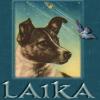I was researching methamphetamine's effects on alpha receptors when I came across a alpha 2 antagonist called Dexefaroxen. I know we have NSI-189 and Dihexa but it's still damn cool
http://www.nature.co...l/1300954a.html
The alpha2-adrenoceptor antagonist dexefaroxan enhances hippocampal neurogenesis by increasing the survival and differentiation of new granule cells.
AuthorsRizk P, et al. Show all Journal
Neuropsychopharmacology. 2006 Jun;31(6):1146-57.
Affiliation
Abstract
The generation of new neurons in the hippocampus is a dynamic process regulated by environmental, endocrine, and pharmacological factors. Since enhancement of hippocampal neurogenesis has been associated with learning and memory, and the locus coeruleus-noradrenergic system has been shown to modulate these cognitive functions, we hypothesized that activation of noradrenergic neurotransmission might enhance neurogenesis in the adult hippocampus. To test this hypothesis in vivo, we induced the release of noradrenaline in the hippocampus by blocking presynaptic inhibitory autoreceptors with the selective alpha2-adrenoceptor antagonist dexefaroxan. Confocal microscopy showed that noradrenergic afferents make contact with proliferating and differentiating cells, suggesting a direct noradrenergic influence on neurogenesis. Chronic systemic treatment of rats with dexefaroxan did not affect cell proliferation per se in the dentate gyrus (as monitored by bromodeoxyuridine-labeling), but promoted the long-term survival of newborn neurons by reducing apoptosis. Dexefaroxan treatment also enhanced the number and complexity of the dendritic arborizations of polysialated neural cell adhesion molecule-positive neurons. The trophic effects of dexefaroxan on newborn cells might involve an increase in brain-derived neurotrophic factor, which was upregulated in afferent noradrenergic fiber projection areas and in neurons in the granule cell layer. By promoting the survival of new endogenously formed neurons, dexefaroxan treatment represents a potential therapeutic strategy for maintaining adult neurogenesis in neurodegenerative conditions, such as Alzheimer's disease, that affect the hippocampus.
In vivo upregulation of endogenous NGF in the rat brain by the alpha2-adrenoreceptor antagonist dexefaroxan: potential role in the protection of the basalocortical cholinergic system during neurodegeneration.
AuthorsDebeir T, et al. Show all Journal
Exp Neurol. 2004 Dec;190(2):384-95.
Affiliation
Abstract
We have previously reported that the alpha2-adrenoceptor antagonist dexefaroxan protects against the degeneration of nucleus basalis magnocellularis (NbM) cholinergic neurons following cortical devascularization in the adult rat. Since nerve growth factor (NGF) is critical to the survival of NbM cholinergic neurons in the adult brain and its synthesis is known to be regulated by noradrenergic mechanisms, we examined whether the protective effect of dexefaroxan in the devascularization model was associated with regional induction of NGF biosynthesis. Dexefaroxan or vehicle was administered to rats via subcutaneous minipumps for 28 days following devascularization or sham operation procedures. In vehicle-treated devascularized rats, NGF protein levels in the cortex were increased at 5 days but had normalized by 2 weeks postoperation; NGF levels in NbM remained unchanged during this time. In dexefaroxan-treated devascularized rats, increases in NGF protein levels (2-fold) and immunoreactivity were maintained in both the cortex and NbM over the entire 28-day postoperation period; these increases were coincident with changes in functional markers characteristic of NGF's actions, including increases in choline acetyltransferase (ChAT), p75 and TrkA immunoreactivities, and a preservation of NbM cholinergic cell numbers. Dexefaroxan also increased NGF protein levels in sham-operated rats, but without any significant consequence to the otherwise normal NbM cholinergic phenotype in these animals. Results indicate that activation of endogenous NGF systems could contribute to the cholinergic protective effect of dexefaroxan in the cortical devascularization model, and provide further support for a potential therapeutic utility of dexefaroxan in neurodegenerative diseases where central cholinergic function is progressively compromised.
Effects of acute and subchronic administration of dexefaroxan, an alpha(2)-adrenoceptor antagonist, on memory performance in young adult and aged rodents.
AuthorsChopin P, et al. Show all Journal
J Pharmacol Exp Ther. 2002 Apr;301(1):187-96.
Affiliation
Abstract
The present study examined the influence of dexefaroxan, a potent and selective alpha(2)-adrenoceptor antagonist, on cognitive performance in rodents. In young adult rats, dexefaroxan reversed the deficits induced by UK 14304 [5-bromo-N-(4,5-dihydro-1-H-imidazol-2-yl)-6-quinoxalinamine], scopolamine, and diazepam in a passive avoidance task. In this test, dexefaroxan also attenuated the spontaneous forgetting induced by a 15-week training-testing interval. Moreover, dexefaroxan, given immediately after training, increased the memory performance of rats trained with a weak electric footshock in the passive avoidance test, facilitated spatial memory processes in the Morris water maze task in rats, and increased the performance of mice in an object recognition test. Thus, dexefaroxan appears to have a promnesic effect in these tests by facilitating the processes of memory retention, rather than acquisition or other noncognitive influences. The facilitatory effects of dexefaroxan in young adult rats persisted even after a 21- to 25-day constant subcutaneous infusion by using osmotic minipumps, indicating that tolerance to the promnesic effect of the drug did not occur during this prolonged treatment interval. Furthermore, in the passive avoidance and Morris water maze tests, dexefaroxan ameliorated the age-related memory deficits of 24-month-old rats to a level that was comparable to that of young adult animals, and reversed the memory deficits induced by excitotoxin lesions of the nucleus basalis magnocellularis region. Together, these findings support a potential utility of dexefaroxan in the treatment of cognitive deficits occurring in Alzheimer's disease.

















































